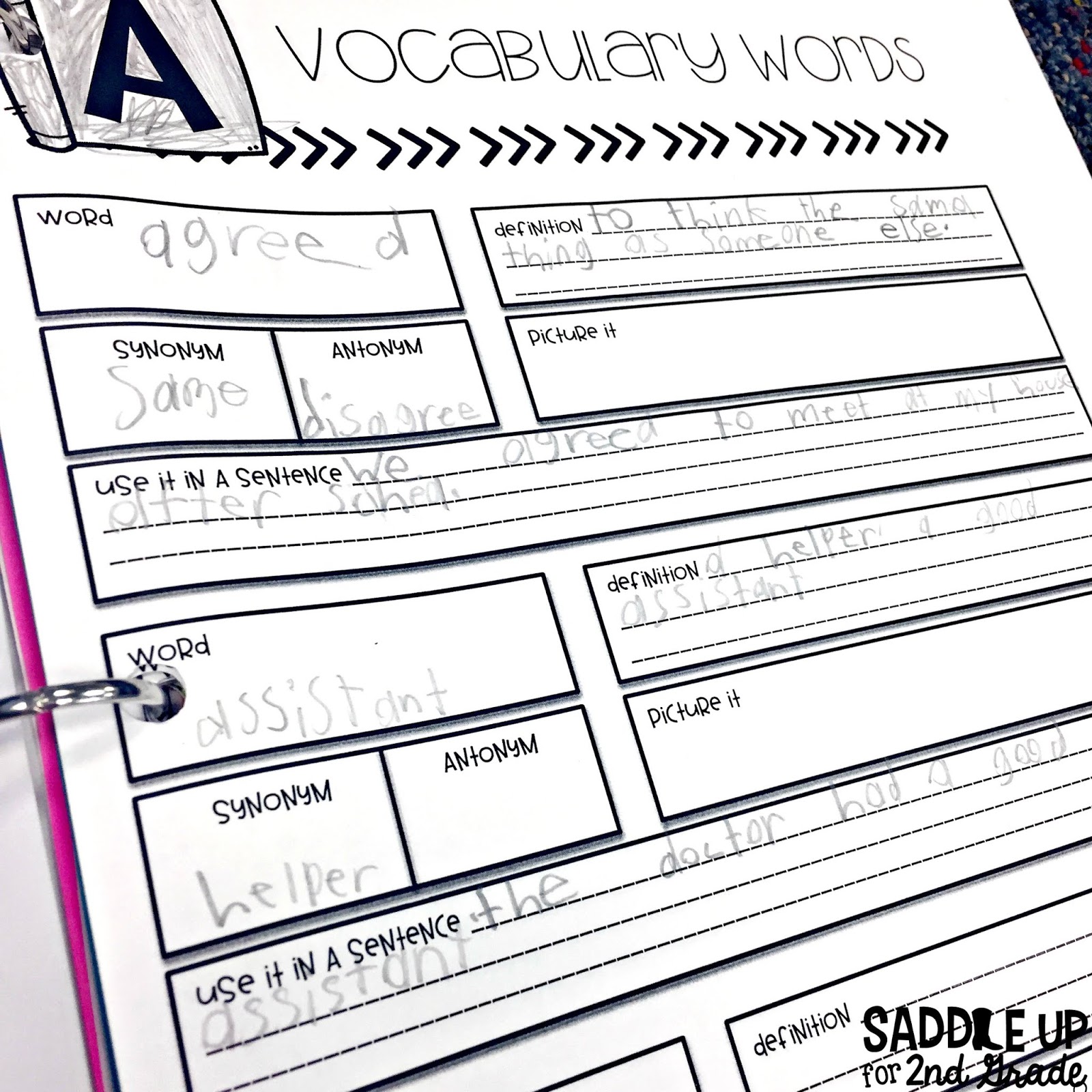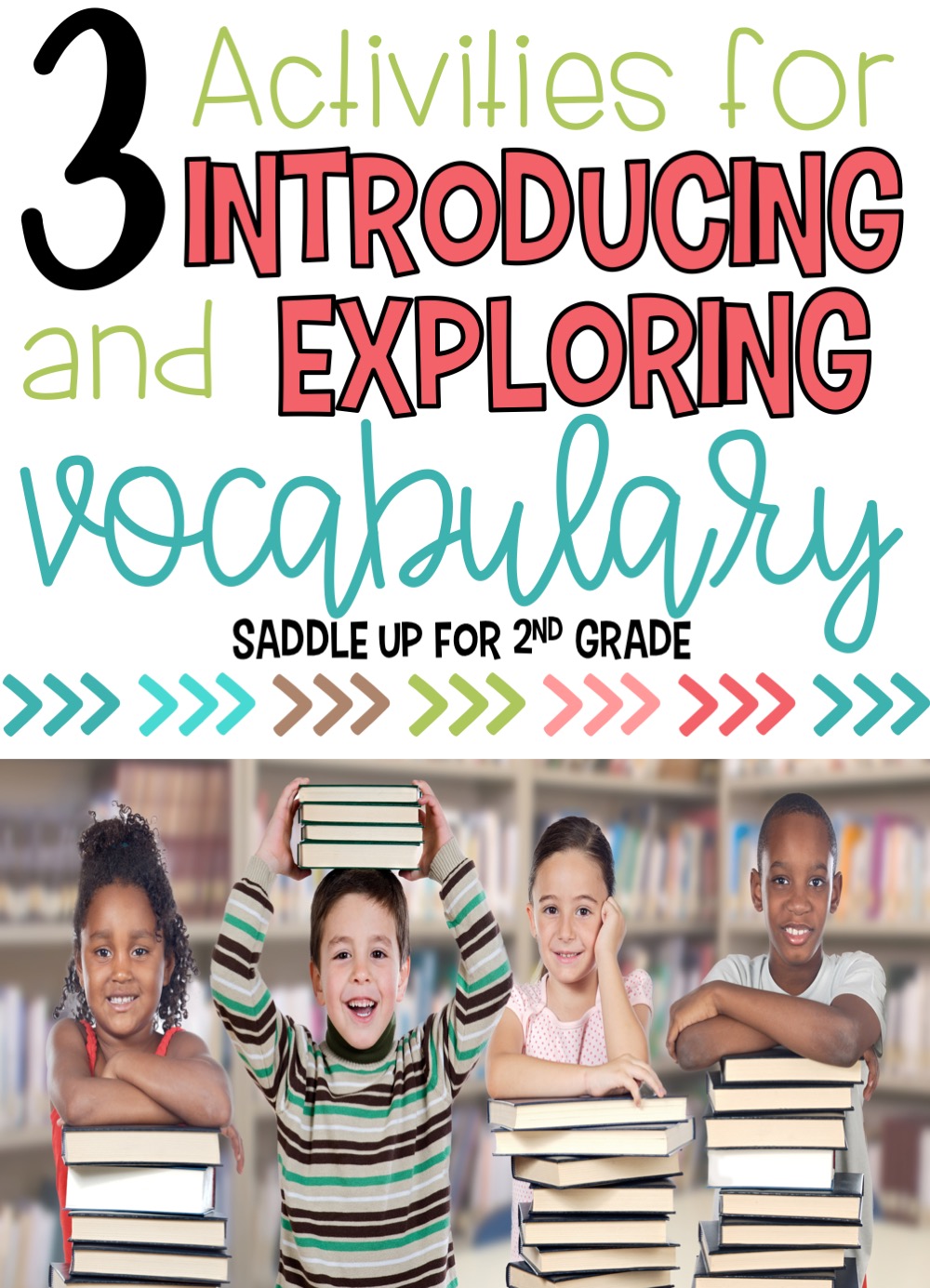

Join me for a FREE, Guided Math workshop to discover how to easily incorporate Guided Math into your current schedule!
Do you know how to teach vocabulary skills effectively to students? If you’ve been following me for a while you know that I am a huge advocate for teaching vocabulary for your kids in the classroom. Vocabulary holds a strong relationship with reading comprehension. Vocabulary activities play an important roll in helping students learn to read as well as reading to learn.
Knowing how to teach vocabulary through effective instruction and using appropriate vocabulary activities is essential. Students need both direct vocabulary instruction as well as and indirect instruction in vocabulary meanings as well as multiple exposures to words. It is through multiple exposures, repetition, and vocabulary activities that students begin to understand words and how to when speaking and writing.
For years I have followed Marzano’s Six Step Process to guide my vocabulary teaching strategies. It involves the following steps:
1. Describe and explain
2. Restate and Explain in their OWN words.
3. Create a drawing.
4. Enrich and expand their knowledge (synonyms, antonyms, prefixes…)
5. Collaborate with others (partner work, think-pair-share)
6. Involve with play (games, word work, etc..)
I know those six steps probably seem like a lot to take in. Research shows that effective vocabulary instruction can happen in just 15 minutes a day.
Here is what my weekly vocabulary routine looks like.
Monday: Introduce and Explore
Tuesday Visualize and Define
Wednesday: Synonyms and Antonyms
Thursday: Apply in Writing
Friday: Review
In this post today I’m going to walk you through how to teach vocabulary with specific vocabulary activities that can be used for step 1, introducing and exploring new vocabulary words and understanding the meaning of new words with younger students. These activities are a great opportunity to develop your students understanding of the meanings of words.
This post contains affiliate links. You can see my disclosure here.

Prior to introducing vocabulary words, I like to check their prior knowledge and the different words and vocabulary knowledge they already know. We categorize them using this Spotlight Words vocabulary activity based on how familiar they are with the word. Then, after we’ve finished the story at the end of the week we go back and recategorize them. This gives you a good idea on a list of words you need to focus more time on throughout the week.

Once I have a good idea on their background knowledge then we are ready for the introduction of new and unknown words.
To begin with, I use a vocabulary exercise called My Turn, Your Turn. This idea came from Word Nerds. This is hands down, the BEST professional development book that I’ve read when it comes to vocabulary instruction.
This explicit instruction model on how to teach vocabulary when introducing new words to students focuses on 6 things.
1. Making predictions about the meaning.
2. Teaching parts of speech.
3. Give a kid-friendly definition.
4. Discuss what they already know.
5. Use it in a sentence.
Before everything you say, use the words “my turn.” Then the students will repeat what you just said. Here is an example of how it works. The teacher holds up a vocabulary card with the word breathe.
You can read more about My Turn, Your Turn in this previous blog post that I wrote.
Once our vocab words have been introduced and students understand the meaning of the word, it is time to add them to our Vocabulary Journals. We add our words and they write student-friendly definitions in their own words. At the beginning of the year, we come up with a definition together. As the year goes on and they are more comfortable they can come up and write a definition on their own. A vocabulary journal is the best way for students to keep track of their new words throughout the year.


These are kept in our Writer’s Notebooks and we add to them throughout the week as part of the six-step process. We do not complete the entire graphic organizer for each word on day one. On Mondays, we only add the word and definition. Setting these up as specific vocabulary notebooks works as well.
Now that our words have been introduced it is time to explore the vocabulary words that they have just learned. Each week I use a simple pocket chart activity. If we have time I will do this whole group or sometimes I will choose to do this during my small group time.
I choose three or four words and write them on index cards. I do not do this vocabulary activity for all of our words that have been introduced. This allows me to differentiate when I do this vocabulary activity during small groups. Then, I will write sentences using the vocabulary words onto sentence strips and leave a blank space where the vocabulary word should go. As a class, read the sentence aloud together, saying “blank” where the word is missing.
Next, place a word card in each of the sentences but put them in the wrong place. Have your students read each sentence aloud together. They give a thumbs up if the word makes sense and a thumbs down if it doesn’t make sense. If they are not sure, they give thumbs sideways. This allows you to visually see what the students know.
Then, call on a student to choose a vocabulary word and move it to the sentence they think it belongs. They will reread the sentence together. If they agree, they will give a thumbs up and if they disagree they will give a thumbs down. Repeat the process with all the sentences shown in the pocket chart. This is a great way to check the understanding of all students at once.
I hope that you have found some of these vocabulary activities and resources on how to teach vocabulary to students helpful. It is important to use explicit vocabulary instruction when introducing new words to younger children. My next post will be all about the second step in Marzano’s Six Step Process. I’ll be sharing another effective way on how to teach vocabulary by helping students visualize and define their vocabulary words.
You can the vocabulary resources featured in this post by checking out the vocabulary section in my TeachersPayTeachers Store. These resources give you many fun ways to teach vocabulary.
Like this post about how to teach vocabulary to students and want to save it for later? Pin the image below to save these vocabulary strategies!

Math should be fun, not stressful. Ditch the timed math fact tests and replace them with math games that will help your students learn and retain information more effectively.
© Saddle Up for 2nd Grade • Website by KristenDoyle.co